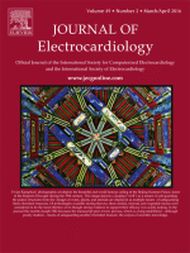Harmon KG, Zigman M, and Drezner JA.
BACKGROUND: The optimal cardiovascular preparticipation screen is debated. The purpose of this study was to perform a systematic review/meta-analysis of evidence comparing screening strategies.
METHODS: PRIMSA guidelines were followed. Electronic databases were searched from January 1996 to November 2014 for articles examining the efficacy of screening with history and physical exam (PE) based on the American Heart Association (AHA) or similar recommendations and electrocardiogram (ECG). Pooled data was analyzed for sensitivity, specificity, false positive rates and positive and negative likelihood ratios. Secondary outcomes included rate of potentially lethal cardiovascular conditions detected with screening and the etiology of pathology discovered.
RESULTS: Fifteen articles reporting on 47,137 athletes were reviewed. After meta-analysis the sensitivity and specificity of ECG was 94%/93%, history 20%/94%, and PE 9%/97%. The overall false positive rate of ECG (6%) was less than that of history (8%), or physical exam (10%). Positive likelihood ratios were ECG 14.8, history 3.22 and PE 2.93 and negative likelihood ratios were ECG 0.055, history 0.85, and PE 0.93. There were a total of 160 potentially lethal cardiovascular conditions detected for a rate of 0.3% or 1 in 294. The most common pathology was Wolff-Parkinson-White (67, 42%), Long QT Syndrome (18, 11%), hypertrophic cardiomyopathy (18, 11%), dilated cardiomyopathy (11, 7%), coronary artery disease or myocardial ischemia (9, 6%) and arrhythmogenic right ventricular cardiomyopathy (4, 3%).
CONCLUSIONS: The most effective strategy for screening for cardiovascular disease in athletes is ECG. It is 5 times more sensitive than history, 10 times more sensitive than physical exam, has higher positive likelihood ratio, lower negative likelihood ratio and a lower false positive rate. 12-lead ECG interpreted using modern criteria should be considered best practice in screening for cardiovascular disease in athletes while the use of history and physical alone as a screening tool should be reevaluated.
Article in PDF (for private use only)



